How to position container plants on a patio – 10 simple placement tricks that make any backyard look better
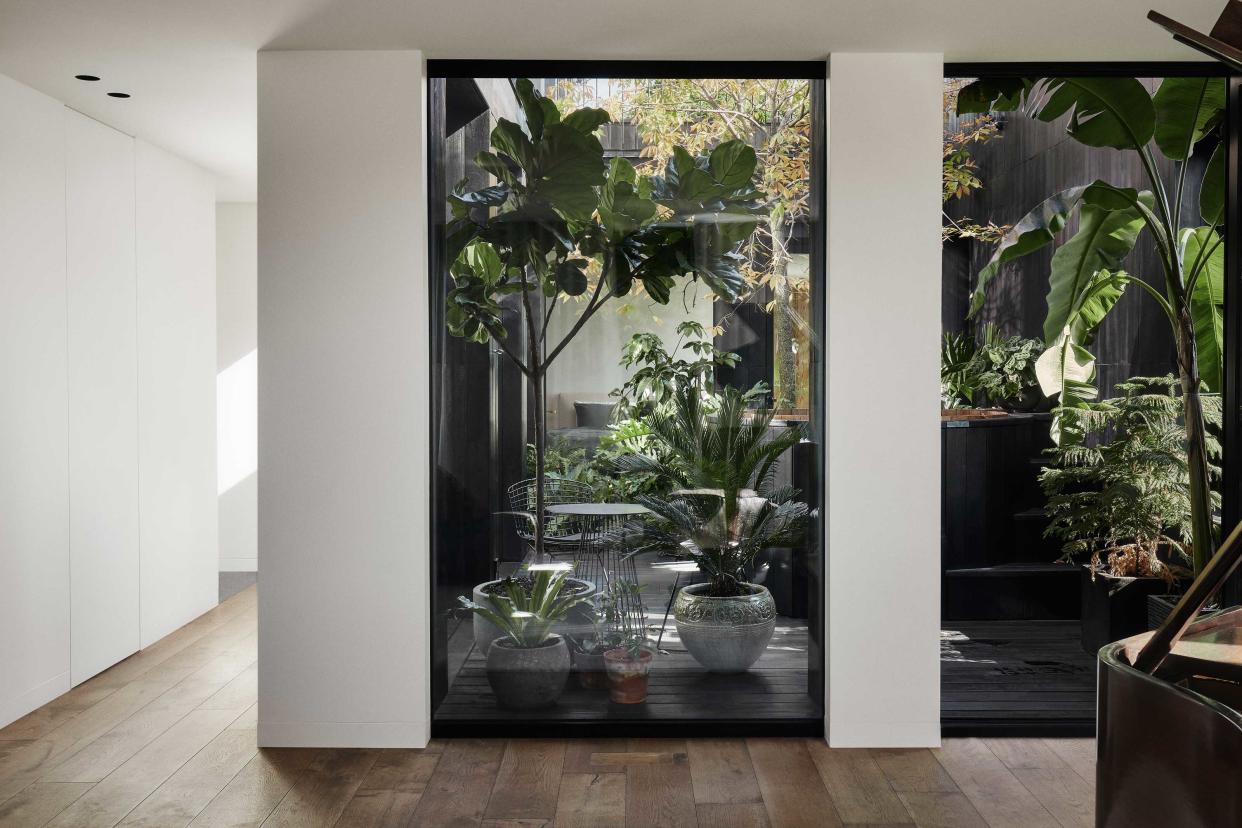
There's one major advantage container gardens have over gardening in flowerbeds - it's easy to re-arrange. While re-thinking your planting scheme in a traditional garden might require digging up and transplanting your shrubs and trees, in a container garden, all you have to do is move your pots from one area to another.
In my own small container garden, I love to be able to refresh my space by moving my plants around, but whether you've got potted plants filling up a small courtyard or just lining your patio, it can be a case of trial and error getting your plant positioning right.
To try take the guesswork out of container layouts (and to save my back from dragging around my olive tree unnecessarily), I asked expert container gardening expert Steph Green, founder of Contained Creations, for her top tips for how to make potted plants look good on a patio.
1. Don't obstruct your space
The first rule of container gardening? Make sure it's practical. 'Don’t get in the way of your traffic flow,' Steph advises me. Whether you've got a tight side yard where containers will mean it's a bit of a squeeze, or you're simply blocking the natural path across your patio and beyond, no layout, as good as it may look, is worth making your backyard a less functional space.
2. Choose the right position for the right plant
And, of course, there's not much point in having a layout that only looks good for a short time, so it's worth ensuring you've weighed up your outdoor space and have the right plants in the right places. 'Consider the light needs of your plants,' Steph says, 'especially when it comes to sun vs. shade vs. partial sun/shade.'
Get to know your backyard's orientation and position the best flowers for pots in full sun in the sunniest spots, while shady plants like ferns can fill up pots in places where the sun doesn't reach.
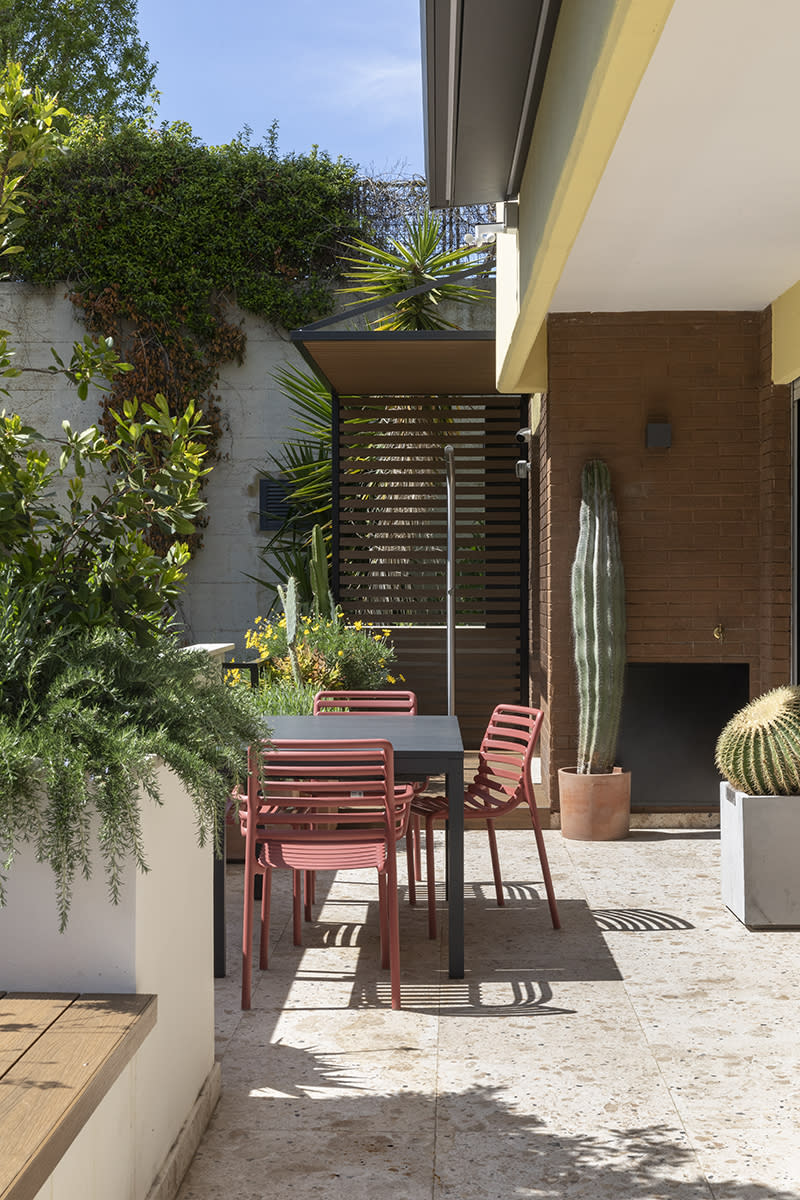
3. Make them easy to look after
On a similar note, 'consider accessibility to your containers to make it easy to care for them,' Steph suggests. Layouts where you can't easily reach all your containers are a common container gardening mistake, so ensure each is accessible to keep them nicely watered, and avoid any suffering from neglect. It's a layout trick that will keep your container garden looking better for longer.
4. Create symmetry around an entrance
Now we've covered the layout mistakes to avoid, where should we start in actually choosing the perfect spots for containers? 'I like to flank an entrance,' Steph says. 'It creates good balance, says welcome to the house, the patio, even the pool.'
In this example by Charter Oak Landscape Development, Inc. potted trees have been used between each glazed door, helping to bring a simple elegance to this modern small patio.
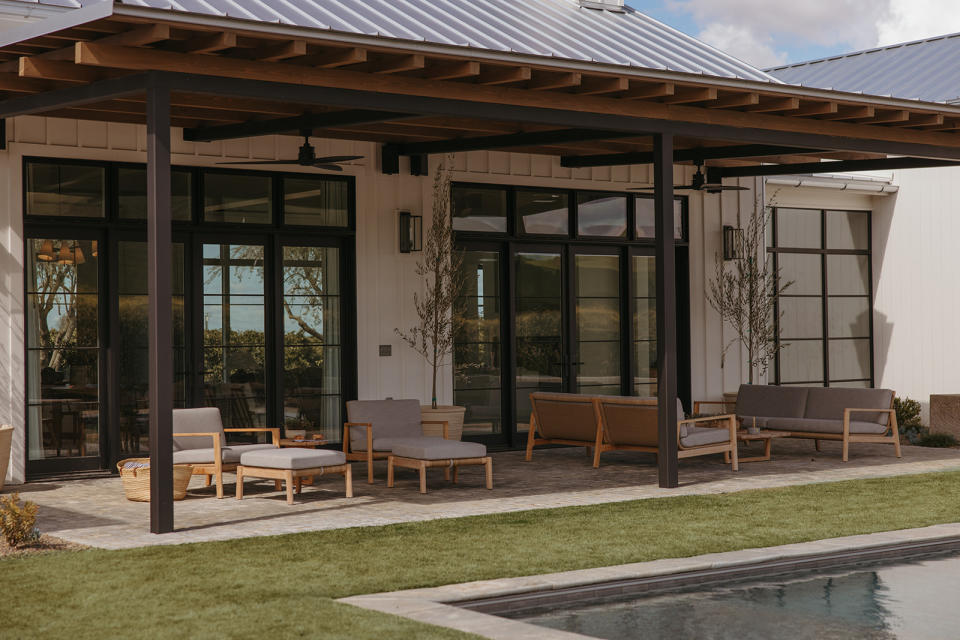
5. Rule of three
There's an old interior styling trick that applies just as much to your container garden as it does to vases on a shelf. 'Group in multiples of three,' Steph says. The rule of three is a great way to group containers together, helping to create a balanced, purposeful look. And once you've nailed the grouping of your containers, you can also use the rule of three for planting to fill them with beautiful foliage, too.
6. Mix heights
One of the tricks that comes with the rule of three is in creating contrast with the containers you choose. Mixing heights, shapes, textures and more will make your grouping feel more interesting, while also balancing the overall look of your creation.
So how should we approach it? 'In a roomy corner, I love a tall, medium, and small,' Steph advises. 'A wide, low bowl is my favorite “small” option.'
7. Or keep sizes identical
However, if you're creating a more minimalist backyard, it might be a better idea to repeat the same container. 'In this case, keep them all the same size and finish with identical plantings to create repetition and rhythm,' Steph says. 'This works particularly well when you place containers in a row.'
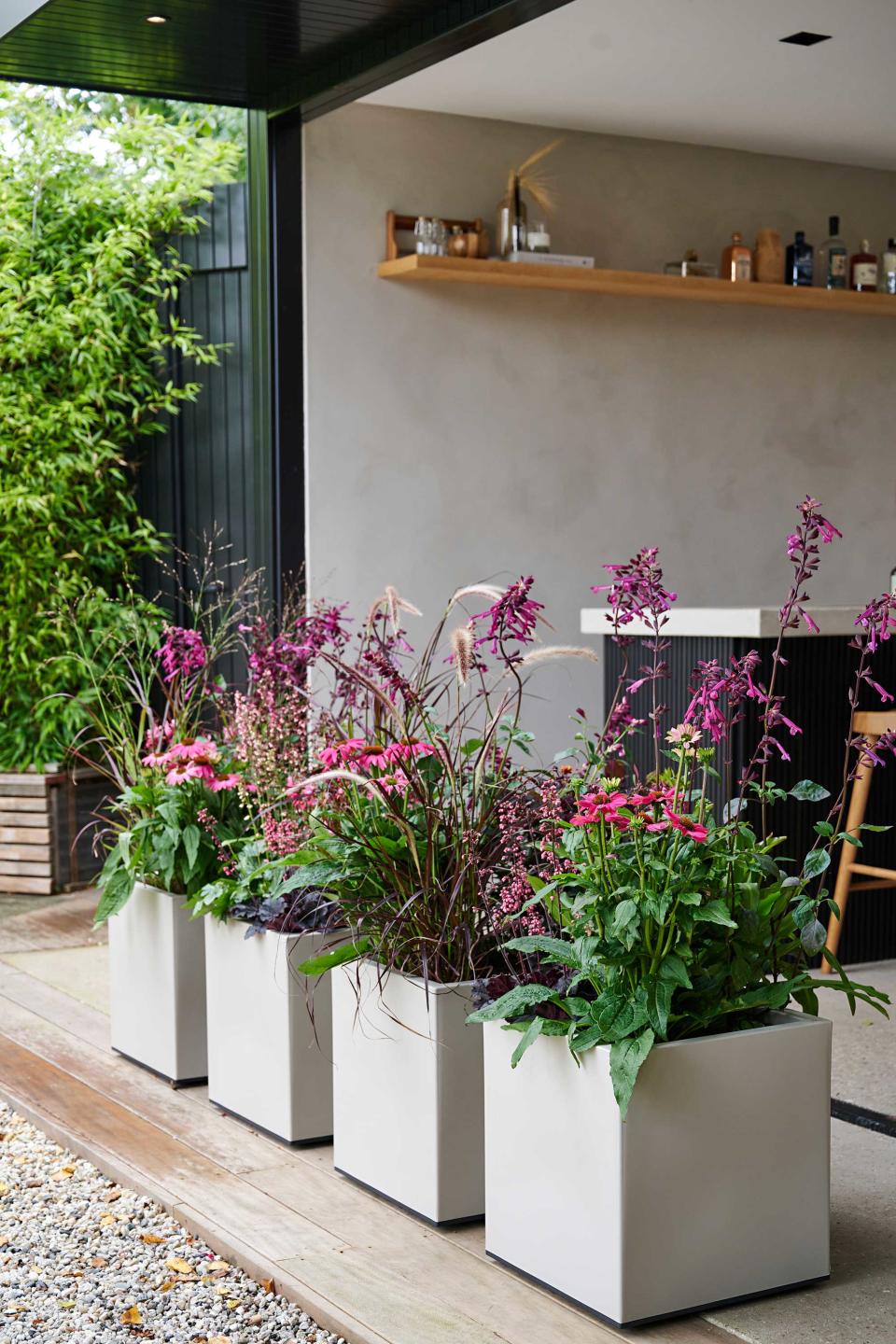
8. Curate a palette
I often surprise myself at how many containers my small backyard can actually hold, but if you don't keep a handle on the styles of pots you add in, it can quickly become chaotic and aesthetically discordant.
'Keep the style and finishes of your pots in the same family or color palette, if not exactly the same, to create the most cohesive look,' Steph tells me. 'I prefer earthy neutral or black/charcoal finishes to let the plants shine.'
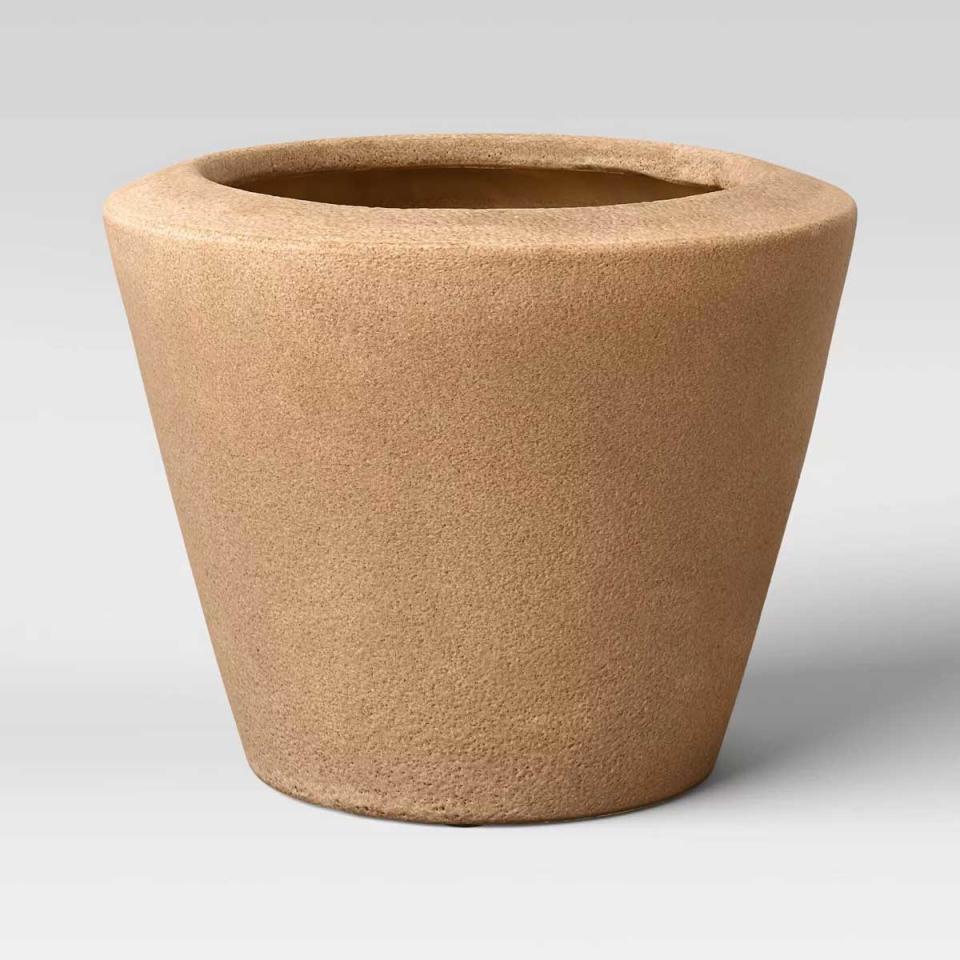
Threshold by Studio McGee earthenware indoor/outdoor planter
Price: $45
Material: Glazed earthenware
9. Keep it minimalist
When in doubt, Steph advises to keep your container garden layout simple. 'Curate, don't clutter,' she says. 'I’d rather have a small number of really beautiful container gardens than numerous “mediocre” ones. Do a couple of great arrangements you can manage rather than creating more than you can handle.'
Container gardens can often feel like a lot of upkeep, so a low-maintenance garden take on container planting sounds like a good idea to me.
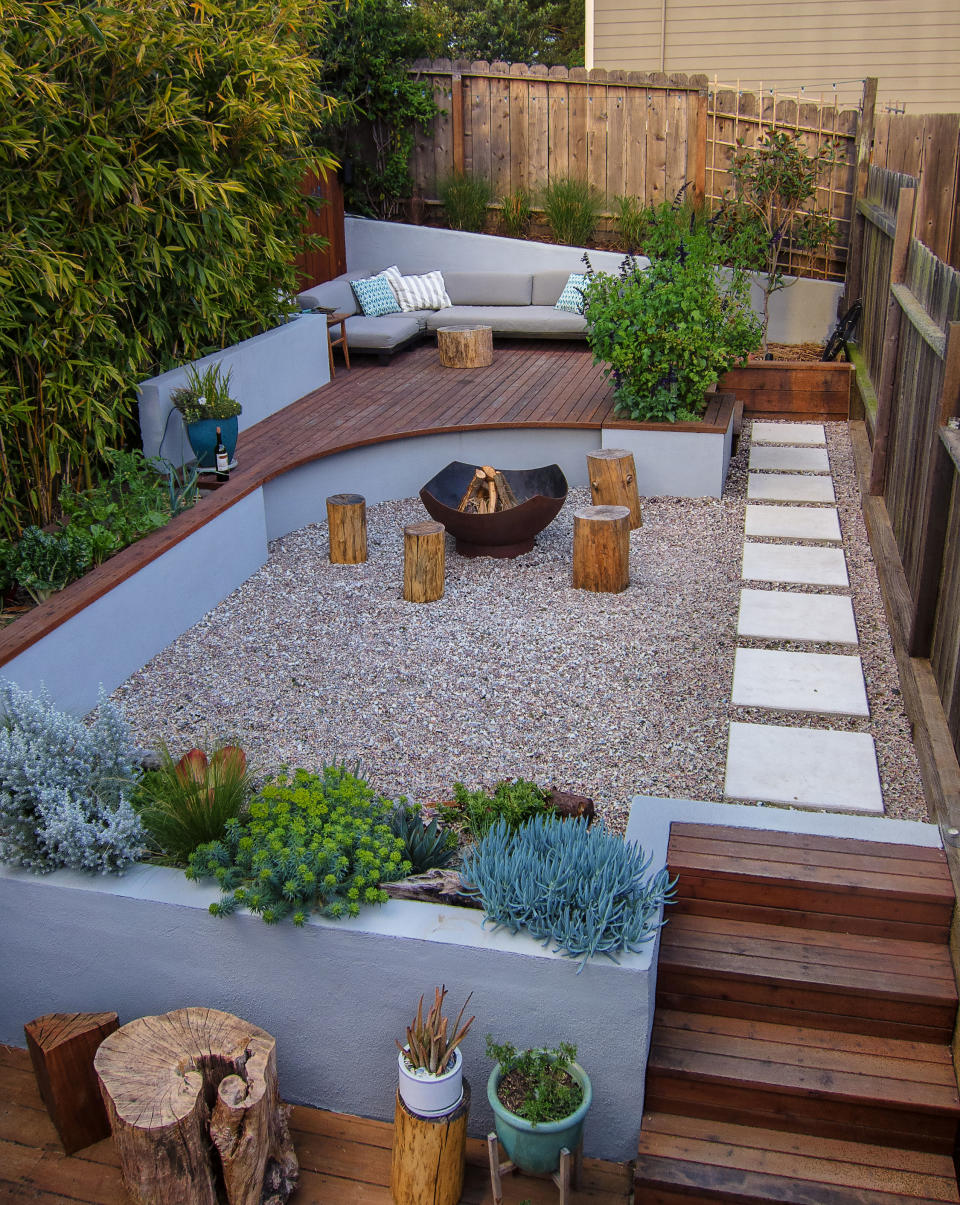
10. Punctuate different zones
When you have a backyard made up of different "zones" - whether that be decking, patio and lawn, grass and gravel - container plants are a great way to mark this transition, and soften the hardscaping elements of your backyard. 'I like to visually punctuate the outer edges of a space,' says Steph, 'and containers are useful for this for the likes of a pool deck, steps, etc.)

